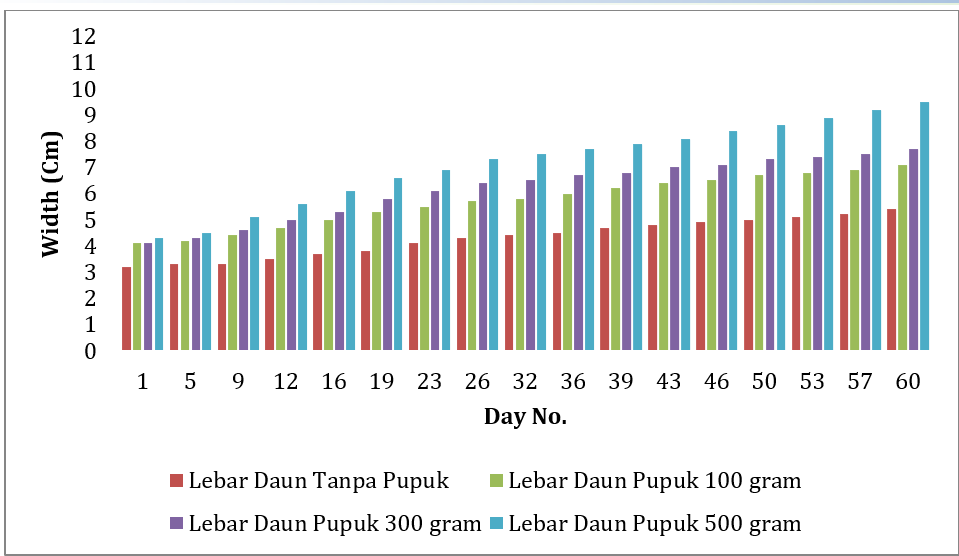Utilization of Snails as Liquid Organic Fertilizer (POC) with the Anaerobic Composter Tube Method
DOI:
https://doi.org/10.26555/ijce.v3i1.1414Keywords:
Snail, Effective Microoganisms (EM4), Liquid Organic Fertilizer, Purple EggplantAbstract
Indonesia is a country with thousands of islands inhabited by flora and fauna, with these conditions, many organisms such as snails are found. Snails are often considered pests by vegetable farmers. Snails contain amino acids, nitrogen, phosphorus, potassium, and protein that can help increase plant growth and development. The purpose of this study was to utilize snails as liquid organic fertilizer, to find out the process of making liquid organic fertilizer from snails, to find out the differences in the content of liquid organic fertilizer from the three samples, to find out the comparison of growth in eggplant as a test medium, and to find out the effect of the comparison of molasses and snails. The research methods include preparation of raw materials, boiling and crushing snails, mixing materials, and the fermentation process. After that, the fertilizer from the study was analyzed to determine the content of N, P, K. The results showed that for the analysis of NPK content obtained in a sample of 100 grams of snails, the N content value was 0.028%, P 2 O 5 0.016%, K 2 O 0.003%. In a sample of 300 grams of snails, the N content value is 0.041%, P 2 O 5 0.043%, K 2 O 0.050%. Comparative analysis of purple eggplant plants given snail POC and not given snail POC can be seen the difference in stem height and leaf width. In sample 1 which was not given snail POC, the stem height was 9 cm and the leaf width was 5.4 cm, sample 2 with 100 grams of snails had a stem height of 11.2 cm and a leaf width of 7.1 cm, in sample 3 with 300 grams of snails had a stem height of 12.3 cm and a leaf width of 7.7 cm, while in sample 4 with 500 grams of snails which had a stem height of 15.4 cm and a leaf width of 9.5 cm. This shows that sample 4 with 500 grams of snails has a very good growth rate. The differences in the research test results are due to differences in the dosage or variation and weight of snails and molasses given to each sample.
References
[1] S. Sulisetyowati And M. Oktariani, “The Comparative Effectiveness Slime Snail (Achatina Fulica) With Chitosan Against Wound Healing,” International Journal Of Pharma Medicine And Biological Sciences, Vol. 5, No. 2, Pp. 137–141, 2015.
[2] Y. S. Dewi, “Efektivitas Jumlah Rumpun Tanaman Eceng Gondok (Eichhornia Crassipes (Mart) Solm) Dalam Pengendalian Limbah Cair Domestik,” Jurnal Teknologi Lingkungan Bppt, Vol. 13, No. 2, Pp. 151–158, 2012.
[3] S. C. Thiengo Et Al., “The Giant African Snail Achatina Fulica As Natural Intermediate Host Of Angiostrongylus Cantonensis In Pernambuco, Northeast Brazil,” Acta Trop, Vol. 115, No. 3, Pp. 194–199, 2010.
[4] Ana Naomi, Linda Timorita Hamzah, Yemima Nestaria Nainggolan, And April Lia Kumalawati, “Analisi Keberadaan Bekicot (Achatina Fulica) Dengan Metode Indirect Sampling Di Lingkungan Universitas Tidar,” Proceeding Of Biology Education, Vol. 3, No. 1, Pp. 178–184, 2019.
[5] Pracaya., “Pengendalian Hama Dan Penyakit Tanaman Secara Organik. Kanisius. Y,” P. 308, 2008.
[6] H. Yulipriyanto, “Soil Biology And Its Management Strategies,” Graha Ilmu, Yogyakarta.[Indonesian], 2010.
[7] D. Irawan And M. Y. P. Purba, “The Effect Of Covering Media Composition And Fertilizer Cow Manage On The Growth Of Palm Oil (Elaeis Guineensis J.) Seeds In Pre-Nursery,” Jurnal Online Pertanian Tropik, Vol. 8, No. 3, Pp. 175–185, 2021.
[8] S. Hadisuwito, “Making Liquid Compost,” Agromedia Pustaka, Jakarta [Indonesian], 2007.
[9] T. Deng Et Al., “A Natural Biological Adhesive From Snail Mucus For Wound Repair,” Nat Commun, Vol. 14, No. 1, P. 396, Jan. 2023, Doi: 10.1038/S41467-023-35907-4.
[10] T. B. Singh Et Al., “Role Of Organic Fertilizers In Improving Soil Fertility,” Contaminants In Agriculture: Sources, Impacts And Management, Pp. 61–77, 2020.
[11] S. M. Sitompul And B. Guritno, “Plant Growth Analysis,” Universitas Gadjah Mada Press. Yogyakarta, 1995.
[12] M. Dkk And K. Pupuk, “Kualitas Pupuk Organik Cair Plus Berbahan Dasar Putri Malu (Mimosa Pudica Linn.) Yang Difermentasi Dengan Menggunakan Beberapa Jenis Bioaktivator.”
[13] F. Fahruddin And S. Sulfahri, “Pengaruh Molase Dan Bioaktivator Em4 Terhadap Kadar Gula Pada Fermentasi Pupuk Organik Cair,” Bioma : Jurnal Biologi Makassar, Vol. 4, No. 2, P. 138, Jul. 2019, Doi: 10.20956/Bioma.V4i2.6905.

Downloads
Published
Issue
Section
License
Copyright (c) 2025 Syahrani Pramia Lestari, Dwi Rossani Nur Afifah, Lukhi Mulia Shitophyta, Aster Rahayu

This work is licensed under a Creative Commons Attribution-ShareAlike 4.0 International License.



